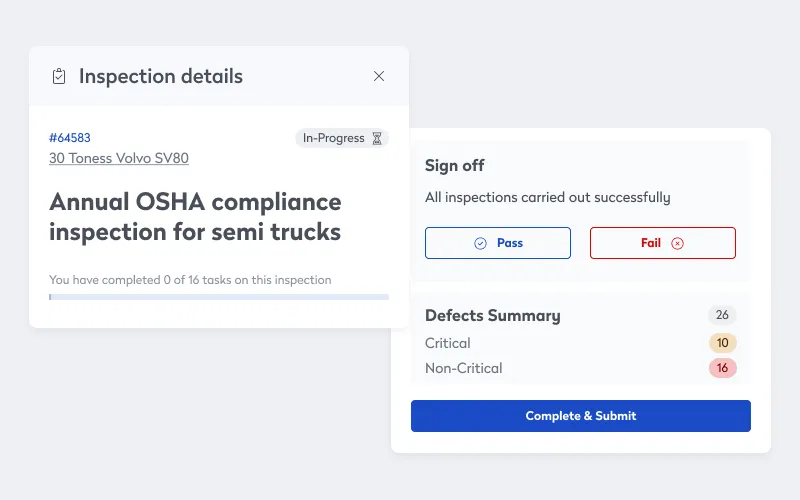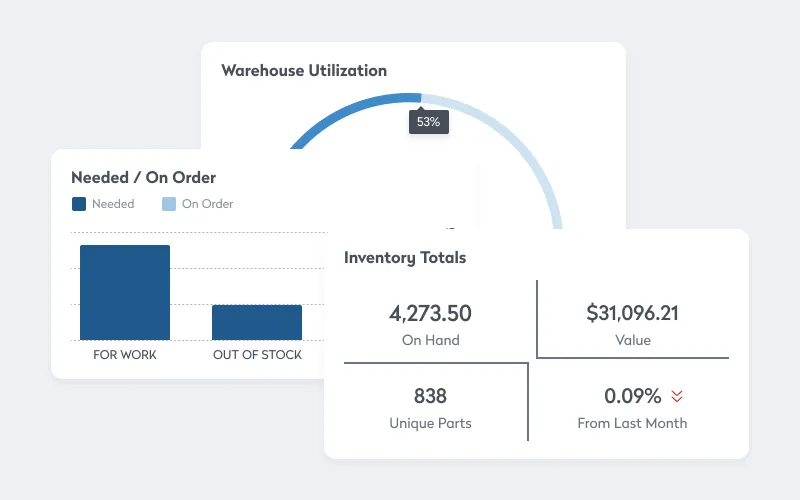
Key takeaways
- Centralize audit data in one system. Use an enterprise asset management (EAM) platform to store policies, SOPs, work orders, warranties, and metrics in a secure, accessible location to save time and reduce errors during audits.
- Leverage historical records for performance insights. Track past work orders, maintenance KPIs, and failure metrics in your EAM to identify asset performance trends, compliance gaps, and areas for operational improvement.
- Streamline compliance and reporting. Generate audit-ready reports instantly, ensuring regulatory requirements are met, voluntary certifications are supported, and internal standards are consistently monitored.
When you’re setting maintenance goals for your department and then looking at the different ways you can reach them, a maintenance audit can be both an important first and recurring step.
It’s the same when you’re planning a path over a physical terrain. Before you can start moving in the right direction, you first need to know where you’re standing. And once you’re on the move, it pays to periodically re-evaluate your bearings.
What is a maintenance audit?
A maintenance audit is a formal process for collecting and evaluating objective data to determine if your maintenance processes are delivering what you need from them. You can see if you’re:
- Meeting both internal and external requirements
- Matching the right strategies to each asset
- Running your programs properly
In short: an audit is your chance to see if you have the right programs in place and if the maintenance team is following them. The insights you gain will help you decide what’s working and what needs to be changed or optimized.
What are the types of maintenance audits?
Although it’s possible to describe maintenance audits in broad strokes, you can also look at some of the more specific types, each with its own set of goals.
Mandatory
Here, government agencies charged with industry oversight perform an audit on your facilities and assets to ensure you comply with the relevant regulations. It’s likely that auditors look at maintenance programs as one part of a larger examination of company policies and procedures.
So, representatives from Occupational Safety and Health Administration (OSHA) might come in for a safety audit, and part of that involves looking at how often the maintenance department schedules preventive maintenance inspections on equipment guardrails.
It can also involve looking at the types of personal protection equipment you provide the maintenance techs.

Voluntary
Many organizations implement projects to obtain voluntary certificates. For example, ISO 55001, an asset management standard, and LEED, a green building standard. Although there is no requirement to have these certificates, companies seek them out for the competitive advantages they gain.
Regardless of the type of certificate, most have initial and then ongoing audits, many of which involve systematic inspections of your maintenance programs.
Internal
Generally, internal audits are one part of larger efforts at continuous improvement, where your company checks to make sure its processes are correct and that the team is following them correctly. Here, the goals are basically the same, but the standards and key performance indicators are all internal.
Why are maintenance audits important?
They’re important because of the value they deliver, including visibility, protection, and accountability.
Working through an audit helps you gain a more complete understanding of not only what your maintenance programs look like in theory but also how well your team is putting everything into action, giving you opportunities to fine-tune everything from schedules to standard operating procedures.
You can also use audits to protect your company from regulatory fines and litigation stemming from safety issues. And because the results are objective, they help establish accountability throughout the department. Once you know that the team is not meeting maintenance KPIs, you’ll be better informed when asking why.
What should you cover in a maintenance audit?
You want to strike a balance between auditing as much as possible while also staying focused on the areas that are the most important. Each audit differs by who’s conducting it and why, but generally, an audit includes examining:
- Safety
- Planning
- Scheduling
- Training
- Documents
- Policies
- Practices
So, during a maintenance audit, you can look at what documents you have on hand, how recent they are, how safely you have them stored, and how easily the team can access them.
Documents can include everything from operation and maintenance manuals, schematics and diagrams, written SOPs for common maintenance inspections and tasks, maintenance checklists, and even warranties. You also need to look at how well the team is putting your program into action, which means you need to review your work orders — both on-demand and scheduled — as well as your inventory.

How does enterprise asset management help you with maintenance audits?
The combination of a central database and powerful reporting features in an enterprise asset management (EAM) solution can help you at every step of a maintenance audit.
Know what you have
A good EAM solution makes it much easier to conduct the audit because you already have all the data you need in one spot, where it’s safe, secure, and accessible. Instead of spending time chasing down everything from SOPs to warranties, checklists to old inventory purchase orders, everything is already right where you need it.
If during the audit you find gaps in what you should have, you can add them to the system, ensuring you won’t lose them.
And because everything is inside one central database in a digital format, you don’t have to worry about wasting time moving back and forth between formats. It takes a lot more time to match paper work orders to SOP PDFs. Everything is faster when all your data lives inside the same system.
Know what you did
An EAM is the perfect place for all your policies, procedures, and programs. But that only covers the “what should be” of your maintenance efforts. During an audit, you also need to look at the “what was,” which includes all your historical work orders, regardless of which maintenance strategies they fall under.
With the EAM’s built-in reporting module, you can quickly and reliably spin raw data into maintenance metrics and KPIs, which are what you need to see if your maintenance programs are working the way you need them to be. For example, your failure metrics reveal how quickly the team reacts to failures and how long their repairs last before assets fail again.
Collectively, your work orders tell you which assets are costing you the most to keep up and running, as well as how well the team is keeping up with scheduled inspections and tasks.
Get an EAM solution suited to your goals
A unified platform, such as an enterprise asset management (EAM) solution, is a valuable investment for conducting maintenance audits. By centralizing all relevant data, including policies, procedures, work orders, and performance metrics, an EAM system streamlines the audit process and provides valuable insights into the effectiveness of your maintenance programs.
With an EAM in place, you can ensure compliance, identify areas for improvement, and make data-driven decisions to optimize your maintenance operations. Book a demo to find out how Eptura Asset can help you reach your asset management goals.
Frequently asked questions
A maintenance audit evaluates whether your maintenance processes meet internal goals, comply with regulations, and align the right strategies to each asset, helping you identify what’s working and what needs improvement.
An EAM consolidates all relevant documents, records, and metrics into a single platform. This eliminates the need to search across multiple formats and systems, making it faster to gather evidence, verify compliance, and prepare reports.
Audits typically cover safety procedures, maintenance planning and scheduling, training records, documentation accuracy, work order histories, inventory tracking, and how well the team follows established policies and SOPs.








